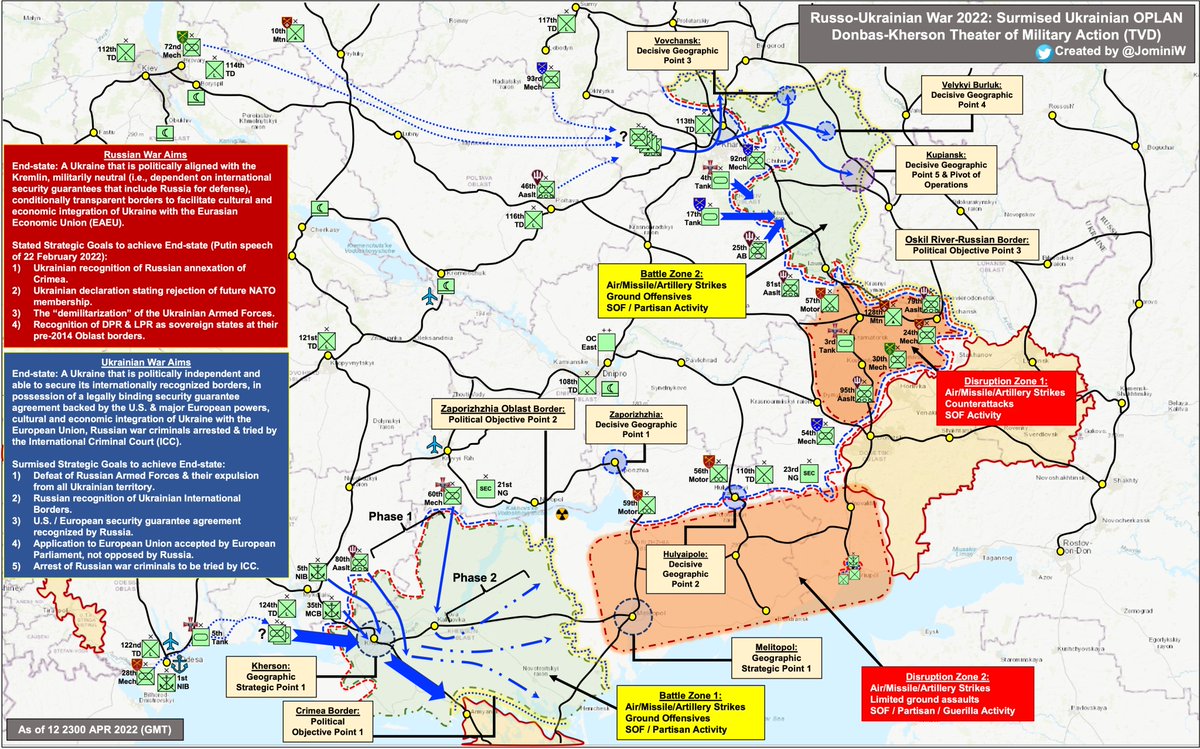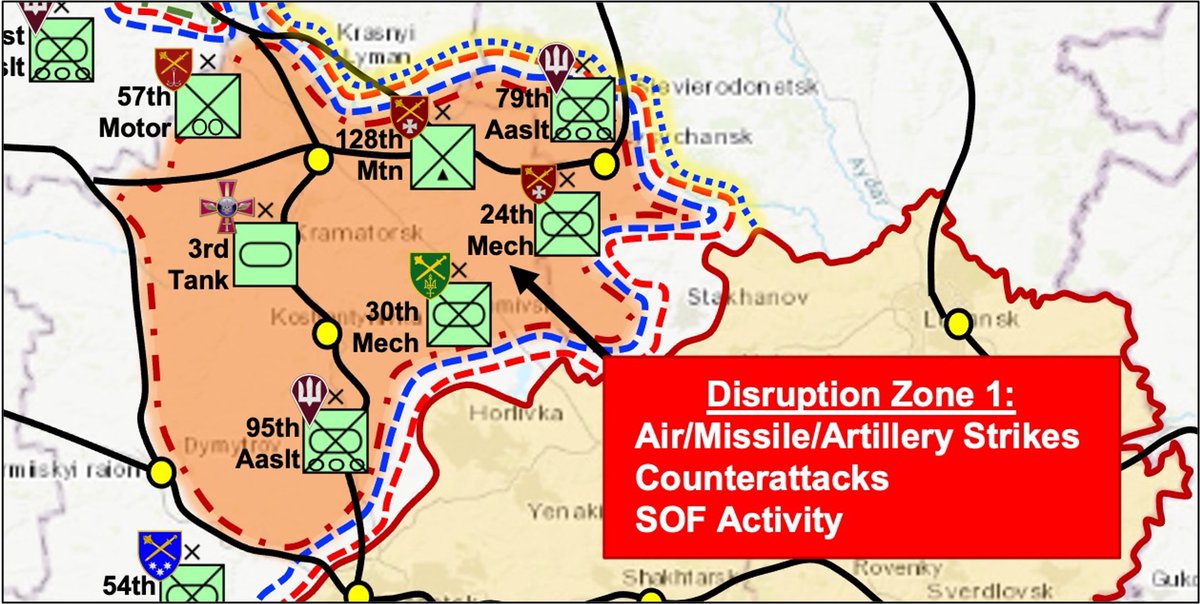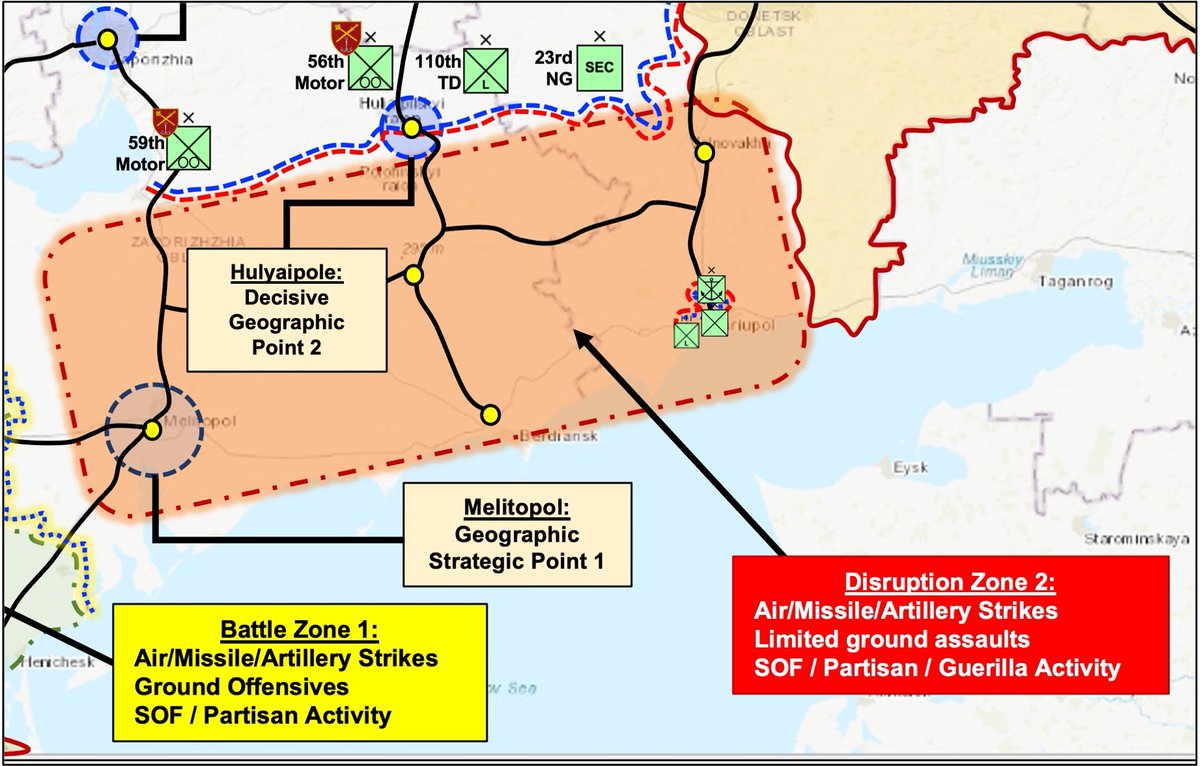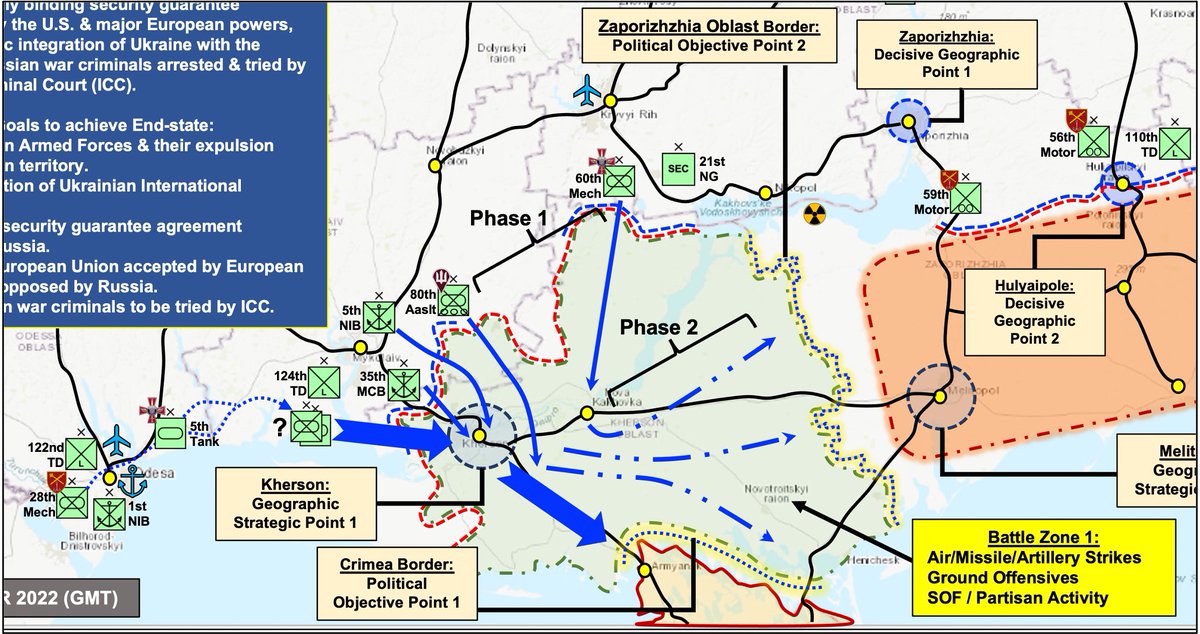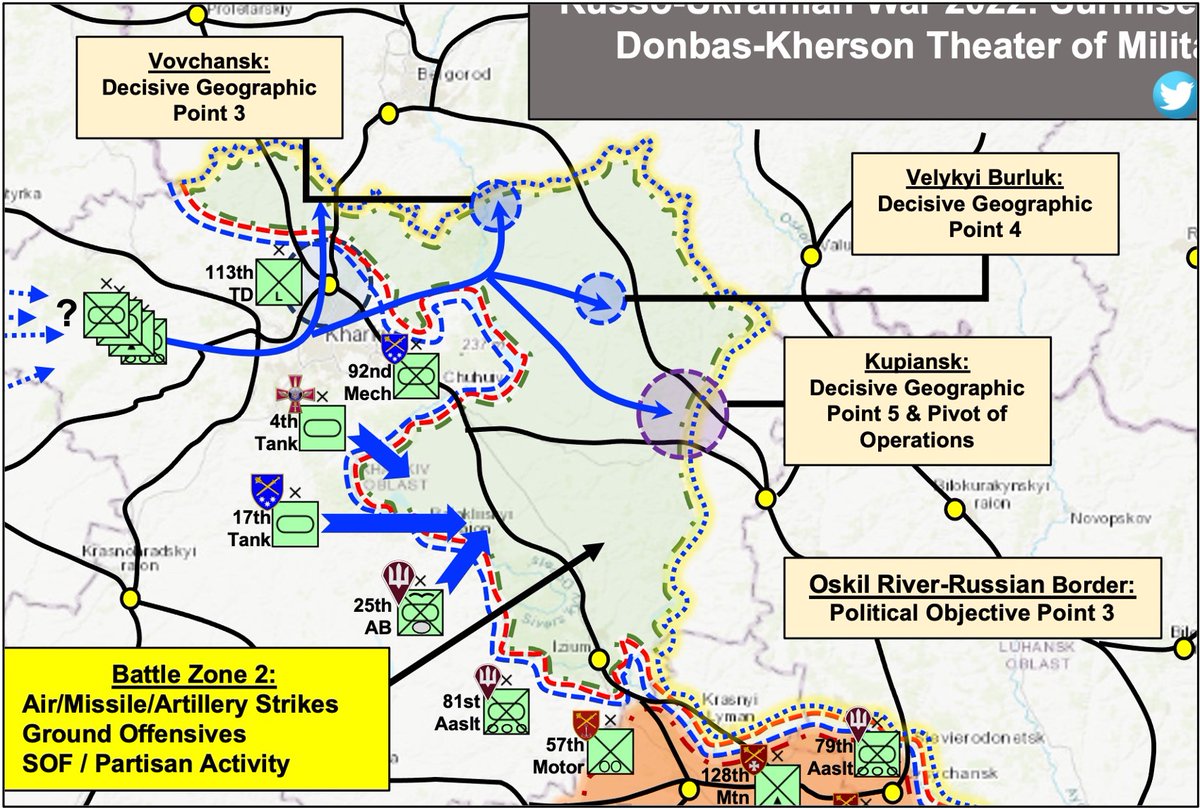1/ Surmising Ukraine’s Strategic Options. Earlier this week I speculated on what a revised Russian OPLAN may look like. Today I will surmise on likely strategic options Ukraine may pursue to defeat Russia…and win. Another long thread. #UkraineRussiaWar #UkraineUnderAttack
2/ I ended the surmised Russian OPLAN thread with a very brief discussion regarding the challenge how sparse data on the Ukrainian Armed Forces makes it difficult to forecast its operational direction. If anything, this shows the strength of UAF operational security.
3/ One speculative statement I made guessed that the Ukrainian military may be stretched too thin for major counteroffensives, especially of the kind I suggest in this thread. However, I do feel the potential for the action I describe is there for a few reasons.
4/ First, the steady rearming of the Ukrainian military by the West. Second, unlike Russia, Ukraine does have a functioning strategic reserve force & robust domestic/foreign recruitment. Finally, & most importantly, well-motivated Soldiers & competent leaders.
5/ To date, Ukraine has conducted a successful defense in depth along the breath of Russia’s original invasion axes. It was an operational approach that maximized Ukraine’s strength’s while positioning Russian forces to expose their weaknesses.
6/ A key component of Ukraine’s defense in depth was revealing Russia’s principal operational shortcoming, logistics. Ukraine understood how vulnerable Russian logistics were, trading space for time outpaced Russia’s organic ability to support sustained ops & obtain rapid results
7/ Ukraine now faces a similar dilemma. How well the Ukrainian military can transition from an active defense in depth to a more offensive focus to defeat and drive out Russian forces from Ukrainian territory will mean the difference between victory and a renewed frozen conflict.
8/ I have previously stated that the decisive point of a battlefield is determined by the character of geographic positions, the value of the strategic object in view, and the arrangement of the contending forces.
9/ Bearing these in mind we can surmise what seems most important for Ukraine to focus the weight of offensive action to achieve its war aims. Ukraine must now answer the same three questions Russian forces have faced in devising their operational plans.
10/ First, what military conditions much be produced to achieve the strategic goals? Second, what sequence of actions is most likely to produce these conditions? Finally, how should forces and resources be arrayed to accomplish that sequence of actions?
11/ The logical conditions Ukraine must achieve to meet its strategic goals are ability to retain the Severodonetsk Salient, hold Kharkiv & its environs, & recapture the Kherson Oblast and/or a major counteroffensive east of Kharkiv to cut Russian GLOCs to Belgorod.
12/ The logical sequence of actions to obtain these conditions is to conduct simultaneous operations in designated Disruption Zones in the Donetsk & Zaporizhzhia Oblasts, and a series of sequential offensive actions in the Kherson and/or Kharkiv Oblasts.
13/ The current line of contact running from Kharkiv to Kherson (note, this is not a contiguous LOC) generally resembles a classic convex order with a center salient. The advantage this order offers is the ability to direct efforts against the center or one wing.
14/ The reason this is advantageous is that the Ukrainian military can execute a false attack against a portion of the line while applying localized overwhelming force more readily to a weakened defensive sector before the Russians can adjust forces to prevent a breakthrough.
15/ A successful breakthrough on one of the extremities of the convex lines would unravel Russia’s own offensive approach, forcing them into a strategic defense where the initiative would pass decidedly toward Ukraine who could then set the conditions for favorable negotiations.
16/ The Ukrainian military has the potential to execute such an ambitious plan because it has a functioning strategic reserve. Though I am speculating as to the size of this force pool, there are forces that can be repositioned to the east that would enable scalable operations.
17/ Ukraine’s primary focus will be first to defeat the Russian offensive in the Severodonetsk Salient. Russian forces here constitute the last of the Russian military’s immediately available offensive force.
18/ It will take until early fall for Russia to reconstitute more forces remotely capable of executing sustained offensive action (assessed as 30+ continuous days in combat). Defeating Russian forces here will remove the potential of shifting these forces to other sectors.
19/ Simultaneously, Ukraine will need to disrupt Russian disruption efforts in the Zaporizhzhia Oblast. Actions here would mostly by SOF/Partisan/Guerilla activity to target Russian logistics and prevent effective control of occupied cities & towns.
20/ Even if Mariupol falls, it is likely that a substantial part of its defenders will go to ground and continue guerilla activity to hamper Russian activity to incorporate it into the DPR while denying it as a reliable operational base to extend operations into western Donetsk.
21/ The Kherson Oblast is likely become Ukraine’s primary battle zone. Ukrainian forces are already encroaching on Kherson’s defenses. By assuming risk in the Odesa area, the Ukrainian military could reallocate maneuver forces to reinforce those already west of Kherson.
22/ A major counterattack here would be bloody and take considerable time, as Russia would fight a determined battle to hold Kherson. If the city can be retaken Ukrainian forces could advance south and east of the Dnieper River to cut Russian rail GLOCs out of Crimea.
23/ Ukraine could potentially follow up this success by advancing toward the Kherson Oblast border & threaten Russian control of Melitopol. The loss of the Kherson Oblast would be a major defeat for Russia, threatening its hold on Crimea & ability to control the Donbas.
24/ To the north, Ukraine could assume risk around Kyiv & in the NE to reinforce the Kharkiv area and conduct a major counterattack to push Russian forces to the international border and east of the Siverskyi Donets River.
25/ This would set conditions for a major counteroffensive east of the Siverskyi Donets that would likely seek to recapture the decisive geographic points of Vovchansk, Velykyi Burluk, and Kupiansk. Recapturing these towns would sever Russian GLOCs to Belgorod from Izium.
26/ With GLOCs to Belgorod blocked, Russian forces in the Izium area would either counterattack north to reestablish access to Belgorod or move east across the Oskil River and establish a new eventual line of defense to protect their hold on northern Luhansk.
27/ Concurently the recapture of Kupiansk would offer the Ukrainian military a new pivot of operations to either eventually advance into northern Luhansk or turn south and attack Russian forces toward Izium.
28/ The Izium area could be turned into a cauldron in which Ukrainian air & artillery strike could devastated a tightly compact Russian defense as it attempts to maneuver out of the kill zone.
29/ As with my Russian OPLAN assessment my estimation of Ukrainian options will likely end up being wildly off the mark. The point of such an exercise is more to illustrate that Ukraine has a variety of operational pathways it will undoubtedly explore and exploit.
30/ Both Russia and Ukraine have several weeks of hard fighting ahead. Though the situation currently favors Ukraine circumstances are always changing. Russian forces may be able to rally, or they could completely break. One thing is certain, it will be a long and deadly summer.

 Read on Twitter
Read on Twitter